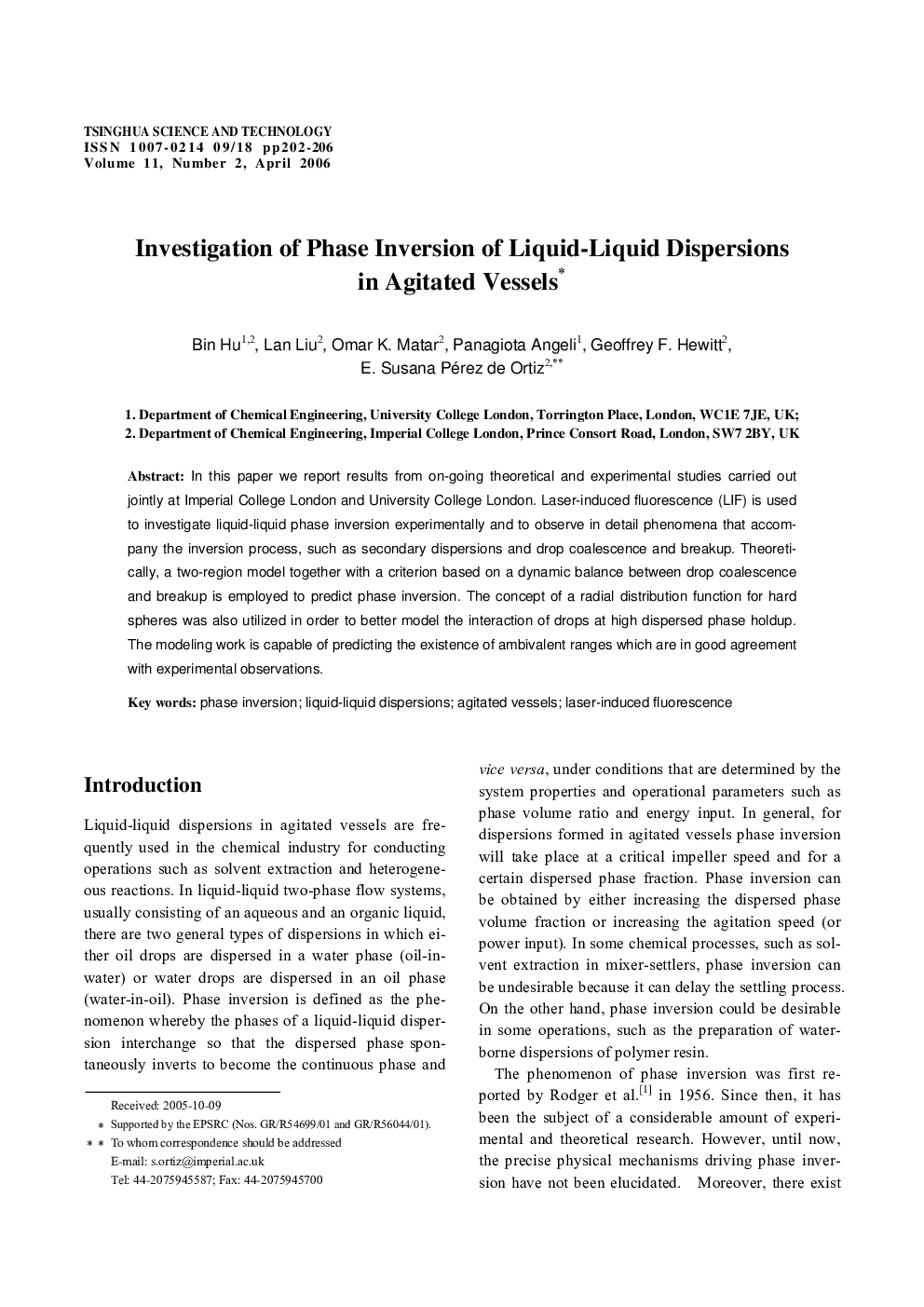| Article ID | Journal | Published Year | Pages | File Type |
|---|---|---|---|---|
| 866007 | Tsinghua Science & Technology | 2006 | 5 Pages |
Abstract
In this paper we report results from on-going theoretical and experimental studies carried out jointly at Imperial College London and University College London. Laser-induced fluorescence (LIF) is used to investigate liquid-liquid phase inversion experimentally and to observe in detail phenomena that accompany the inversion process, such as secondary dispersions and drop coalescence and breakup. Theoretically, a two-region model together with a criterion based on a dynamic balance between drop coalescence and breakup is employed to predict phase inversion. The concept of a radial distribution function for hard spheres was also utilized in order to better model the interaction of drops at high dispersed phase holdup. The modeling work is capable of predicting the existence of ambivalent ranges which are in good agreement with experimental observations.
Related Topics
Physical Sciences and Engineering
Engineering
Engineering (General)
Authors
Bin Hu, Lan Liu, Omar K. Matar, Panagiota Angeli, Geoffrey F. Hewitt, E. Susana Pérez de Ortiz,
